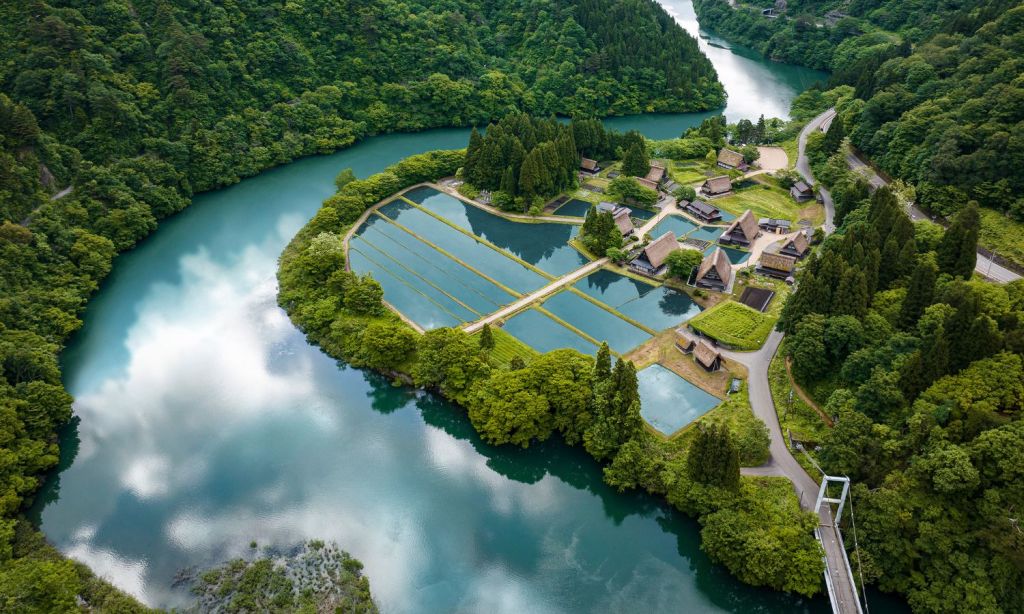Butterflies are darting around flowers that sway gently in the breeze. Green mountains frame bright blue skies. In the distance, a blue-green river is slicing its way through the valley.
It feels like you could be on the other side of the world in Switzerland, but it’s not. We’re less than 15 hours away from Sydney, in Japan, in a village called Suganuma, a UNESCO World Heritage Site with just nine homes, all built in Gassho style. Gasso means “praying hands” in Japanese, and the homes resemble this gesture. Their roofs are made with pampas grass and have to be replaced every 25 years, as part of an expensive operation. Because of that, there are only 150-200 Gassho homes left in the country.
Though Suganuma does welcome tourists, few hear about it. Now, though, it’s being put on the world stage with Airbnb offering one lucky group of two the chance to stay at one of the largest homes in Suganuma where four generations of the Nakashima family currently live. It’s a first-come, first-serve competition, opening Friday, June 30 at 10am AEST on airbnb.com/gassho.
“The rich history and vibrant culture of this charming small town, coupled with the warm hearts of the people who live there, will make for a fascinating and restorative stay,” says Mikio Tanaka, Mayor of Nanto City, Toyama Prefecture. “We hope this campaign brings attention to this beautiful destination for both Japanese residents and guests from around the world.”
Should you miss out on the stay in the Nakashima house, Suganama and its neighbouring village Ainokura, also a World Heritage Site, in the Gokayama area are open to the public to visit. The easiest way to get to the area is by taking the Shinkansen (bullet train) from Tokyo Station to Shin Takaoka Station on a three-hour journey and then organising a driver to take you to the villages, an hour away. The only accommodation in the area is a hotel called Akaokan.
Aside from touring the villages and visiting their museums and souvenir shops, you can also book a tour of the Iwase Residence. Built in the mid-18th century over the span of eight years, it’s the largest Gassho-style house with five stories, including a ground floor that looks out over a pond with fish and the green mountains beyond.
On a tour, its now-owner and wife will pour you tea as they explain the history of the home, as well as perform a song and dance. They’ll also take you up the narrow ladder-like stairs to show you the different floors, some of which were used to grow silkworms. You’ll be able to peek outside windows that, in winter, are often used for doors when their front doors are snowed in.
You can also book an instrument-making session, where you’ll learn to make the binzasara, a percussion instrument used in folk songs and rural dances. Washi paper — what we’d call “rice paper”, though it’s not made with any rice — is also made here, and you can make some of your own pieces to bring home, as part of a factory tour and paper-making session.
The highlight of any trip to the Gokyama area is, without a doubt, simply strolling through the storybook setting that is Suganuma and experiencing, in a small way, their slow, content way of living. Japan is home to some of the oldest people in the world, and this village perfectly showcases why that might be the case.
Related: Is Japan Family-Friendly? These 5 Experiences Shout Yes
Related: Visiting Japan in Summer Lets You Experience Things Few Tourists Do
Read more stories from The Latch and subscribe to our email newsletter.

